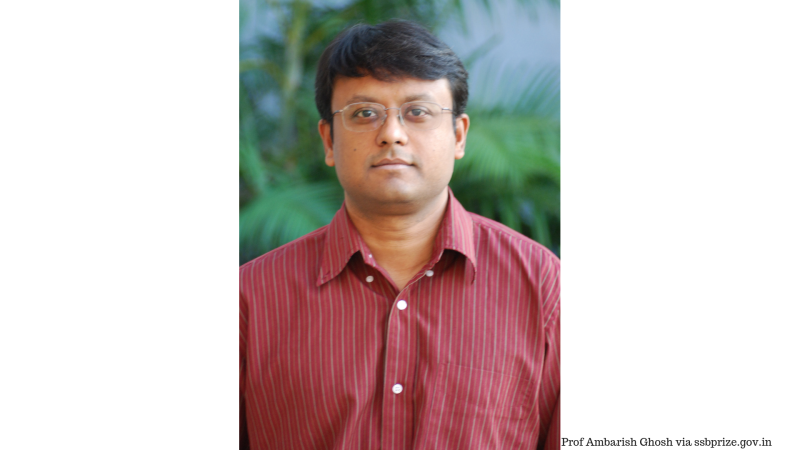
Prof Ambarish Ghosh, Associate Professor at the Centre for Nanoscience and Engineering (CeNSE), Indian Institute of Science, Bengaluru, has been awarded the 2018 Shanti Swarup Bhatnagar Prize for his contributions to the field of experimental physics. Prof Ghosh, who is currently the Prof Ramakrishna Rao Chair Professor, is recognised with India’s prestigious award in science for his research on active magnetic colloids and nanomotors.
The Shanti Swarup Bhatnagar Prize is bestowed by the Council of Scientific and Industrial Research (CSIR) to recognise outstanding science and technology research carried out in India. The annual award serves as an inspiration to advance the frontiers of fundamental and applied research and includes prize money of ₹ 5,00,000/- and a citation plaque.
“It is good to be appreciated by peers, and I am thankful to have smart, motivated students, a collegial, helpful atmosphere at the workplace, and of course a supporting family”, says a delighted Prof Ghosh on his award in an interview with Research Matters. Prof Ghosh’s research interest include active colloids, nanomotors, studying electron bubbles in liquid helium and plasmonics.
Nanomotors are tiny devices that can be manoeuvred with an externally applied electrical or magnetic field, or through a chemical reaction. They are thought to have novel applications in targeted delivery of drugs to particular cells, microsurgery and other therapeutic applications. “Nanomotors provide a new route toward medicine, where drugs are delivered with significantly improved spatial accuracy. There are already promising advances made in retinal drug delivery using nanomotors. Hopefully, the first commercial application in therapeutics is less than a decade away”, shares Prof Ghosh on the possibilities these tiny devices hold. So far, his research group has developed magnetic nanomotors that can move in a living cell, target specific cancer cells, and can measure the viscosity of a fluid.
Besides, Prof Ghosh and his group work on active colloids—tiny particles, like microorganisms or nanomotors, that are capable of moving well in fluid environments. They have developed helical nanostructures that can capture, hold and deliver colloidal particles. “We work on multielectron bubbles in liquid helium which is a promising platform to study interacting electrons in a wide range of densities. The hope is to observe new electronic phase and phase boundaries in this system”, says Prof Ghosh. His research group also works on plasmonics and integrating plasmonic nanostructures with graphene and dichalcogenides for photodetection and quantum emitter applications.
Prof Ghosh is very optimistic about the field of nanotechnology changing the future. “It’s a highly multidisciplinary field, requiring expertise in physics, chemistry, math, engineering, basically everything. If that is the challenge, the opportunities are endless as well, with far-reaching impact in so many areas”, he shares, urging the young to pursue this field if it interests them.






